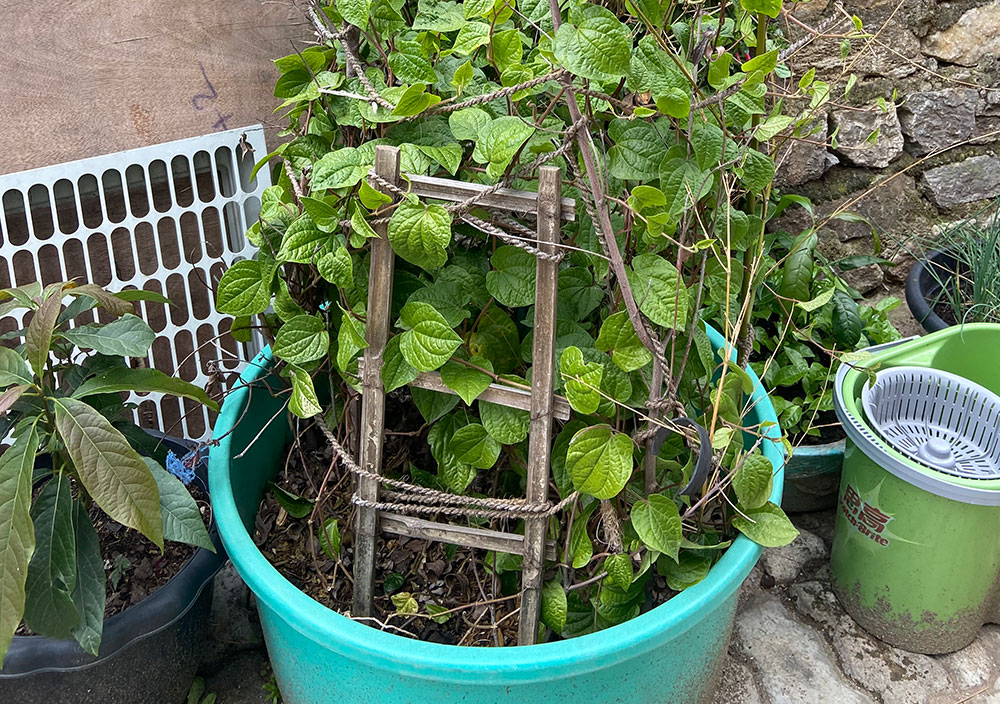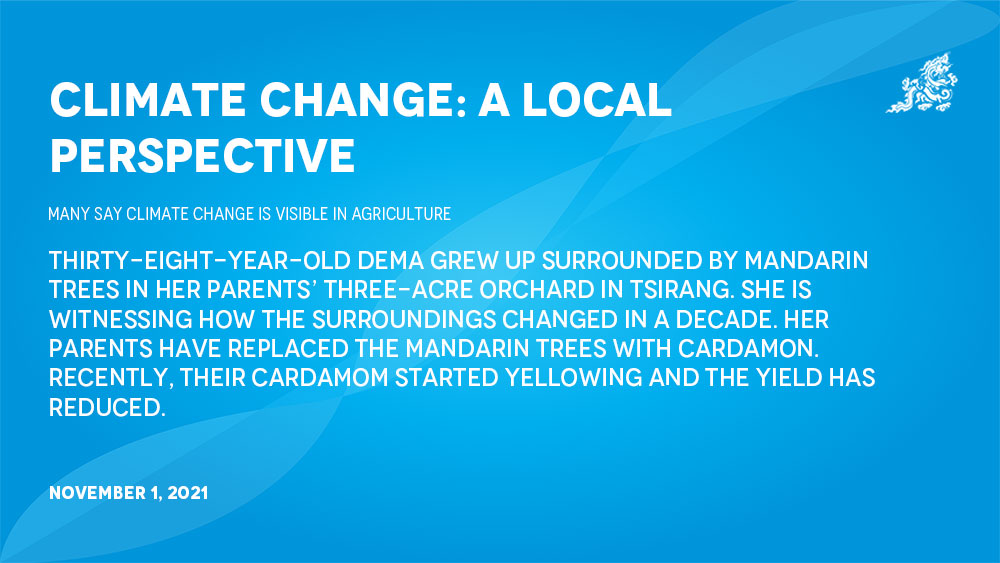Many say climate change is visible in agriculture
Choki Wangmo | Tsirang
Thirty-eight-year-old Dema grew up surrounded by mandarin trees in her parents’ three-acre orchard in Tsirang. She is witnessing how the surroundings changed in a decade. Her parents have replaced the mandarin trees with cardamon. Recently, their cardamom started yellowing and the yield has reduced.
They think the climate and soil no longer favours farming. “Erratic weather such as heavy and short rainfall and windstorms damage the crops,” said Dema.
She said that her parents had to cut down the mandarin trees since the yield was poor after a reported disease outbreak. The family’s cardamom this year was destroyed by the recent rain that also damaged paddy crops in many gewogs in Tsirang. One chiwog in Dagana reported 11 acres of crop damage.
Farmers are quick to blame the change in weather and climate. “Due to climatic change, untimely rainfall affected paddy crops this year,” a farmer in Doonglagang said.
Tsirang residents stopped planting big green chillies a few years ago. They blame the extreme heat and moisture. They were hit hard this year as their small green chilli (jitsi ema) production has decreased because of the chilli blight. “I am losing interest. It is a waste of resources and time,” a farmer in Gosarling gewog said.
Although farmers used preventive measures such as mulching plastic, chillies rot in the field, which many farmers suspect could be affected by high humidity caused by erratic monsoon.
The issue has affected large-scale chili producers across the dzongkhag.
A farmer, Rupa Maya Subedi said that the places have become warmer and the weather is becoming more unpredictable. “It is not like in the olden days. Mandarin trees bear fruits in alternate years when the weather favours. Flowering starts early and there is a shorter fruiting time.” She said that the amount of spring water is decreasing yearly.
Farmers in Dagana also say that while they are not aware about the technicalities of climate change, the impact on their daily lives are grave.
Residents of Gozhi gewog in Dagana with the help of the dzongkhag administration are reviving three of the four lakes which have completely dried. With the rapid drying up of lakes, they are left grappling for drinking water.
Due to water shortage, about 50 households in the gewog could not cultivate paddy for years. A resident Sherub said thatvillagers looked for drinking water sources in different areas for many years but without success.
Farmers in Tshendagang gewog in Dagana also reported decreased size in the onions yearly. They said that the place has become warmer and the soil might not be favouring the growth. The onions are not accepted by consumers.

Betel leaves that grow in hot places can now thrive in Thimphu
Thimphu getting warmer?
“See. Climate change has made this possible,” remarks a retired civil servant showing his flower garden to guests. In his collection is a healthy pani shing (betel leaf) that he got from Phuentsholing. The climber that usually grows in hot places is thriving in his giant plastic pot.
Near the climber are fruit trees and flower plants that once would never survive in Thimphu. The pomegranate tree is flowering and the passion fruit, a climber, is spreading its climbers.
There are new species of plants, including weeds, that are found in colder places. A farmer in Thimphu said, a thorny weed that was once found in Punakha is now a nuisance in Thimphu. “It grows everywhere and even in the creeks of a concrete parking lot,” she said.
The other plants that many people are adapting to change are banana and Tamarillo, locally called tree tomato or sour tomato. The small tree that bears the egg-shaped fruit, a Thimphu resident said, grows in hot places like Punakha and Wangdue. “Now it can bear fruit here in Thimphu,” she exclaimed.
Dorji, 84, has banana plants outside his house in Babesa, South Thimphu. “It has become warmer in Thimphu. The banana plant survives in winter here.”
A Thimphu-based plant expert said that while there are possibilities of increase in temperature there is no hard data or scientific study to validate them. “We might be able to grow fruit trees that were not seen in Thimphu, but the fruit trees would not have the desirable characteristics,” said the expert. This, she explained, is evident from the taste of, for instance, mandarins grown in Thimphu and Phuentsholing.
Plants can acclimatise and if we force, plants can harden up against temperature and can grow, she said. “Some plants can respond to the surroundings and if we give them protection against frost, they will harden up and grow,” she said. “We cannot, without scientific evidence, blame it on climate change.”
An agriculture expert in Thimphu said that with climate change, new pests such as giant African snails and army worms are emerging while crops such as chillies which were not grown in places like Haa and Bumthang in the past are now thriving. “Climate change is happening and its impacts are visible in the agriculture sector,” she said.
College of Natural Resources’ research dean, who is also a climate change expert, Om Katel (PhD), said that the aforementioned phenomena are the result of changing climate.
He said that in the last decade, the frequency of extreme weather events has increased. For instance, he said that the monsoon which was expected to end in early August has recently wreaked havoc, not only in the country but across the world. “Intensity of rainfall has changed significantly. In the last 20 years, the temperature has increased by 1°C.”


